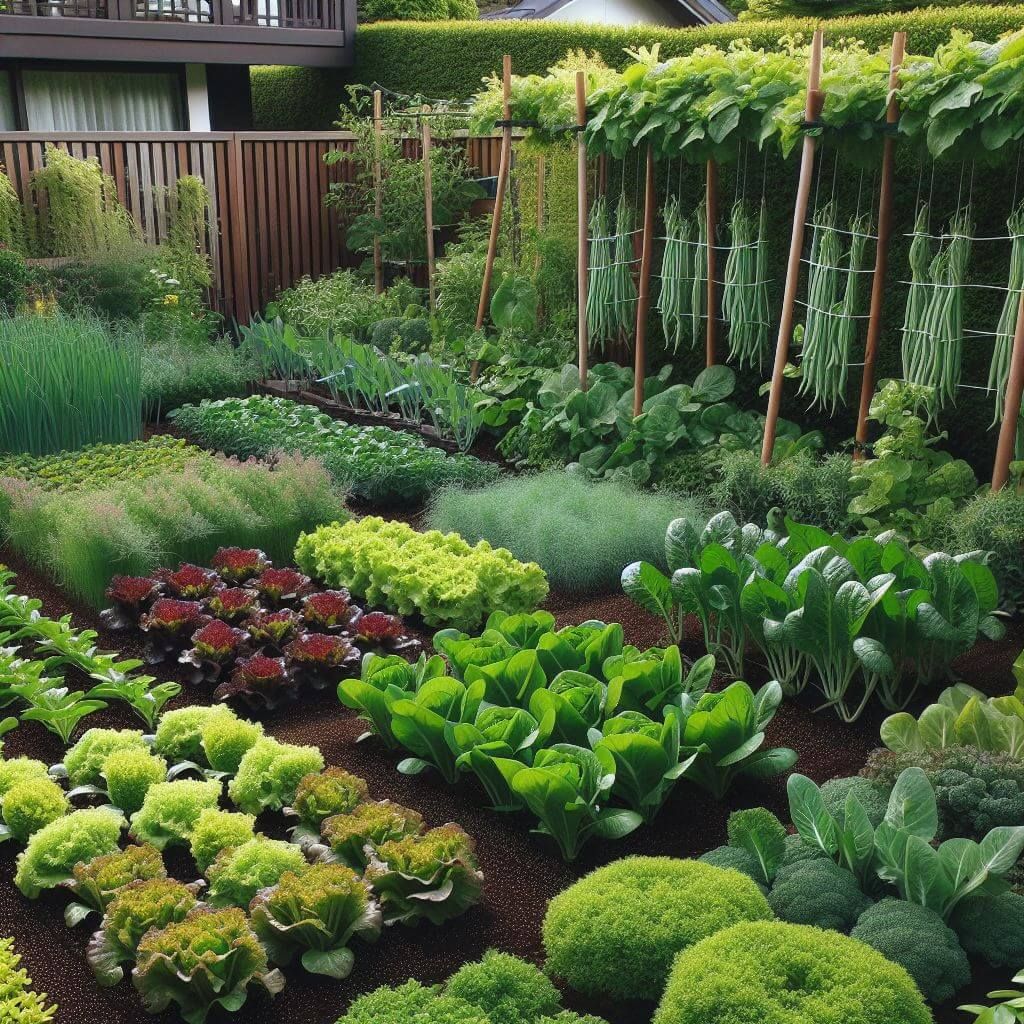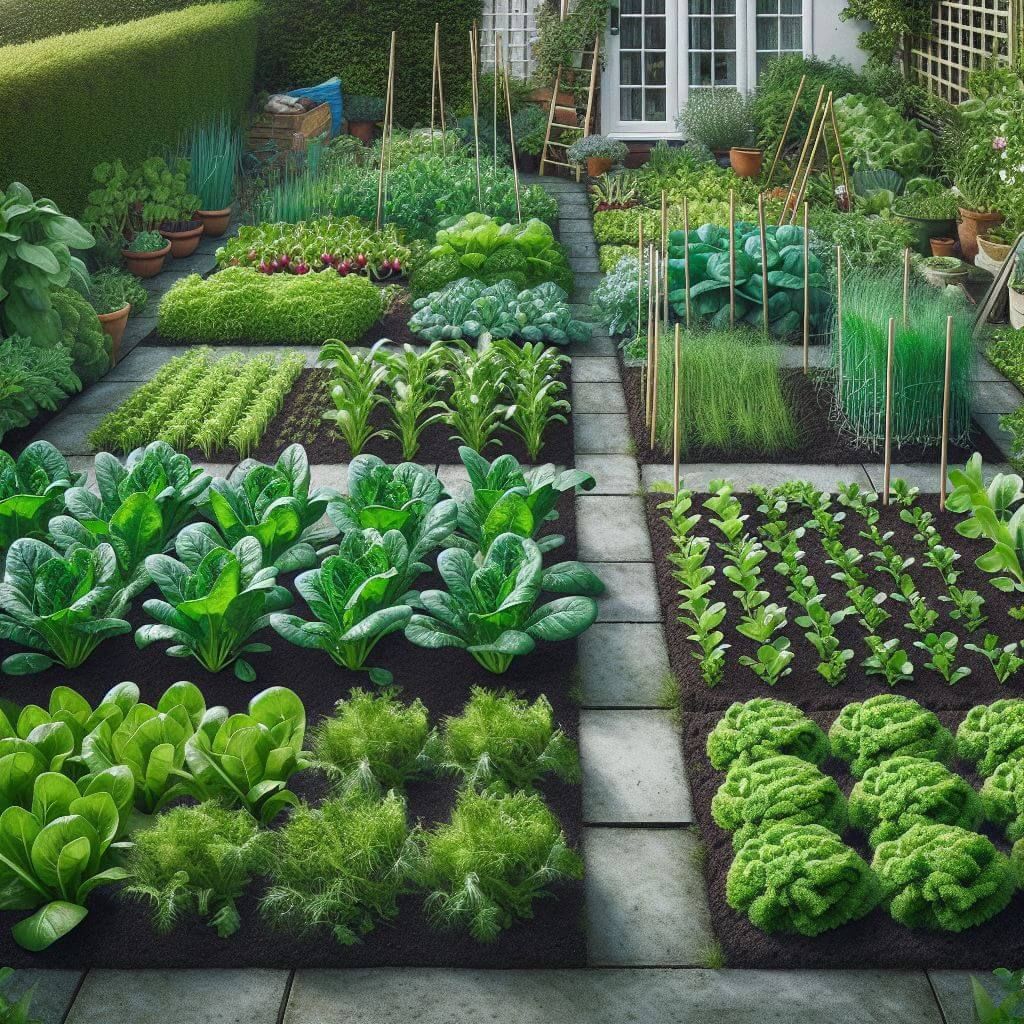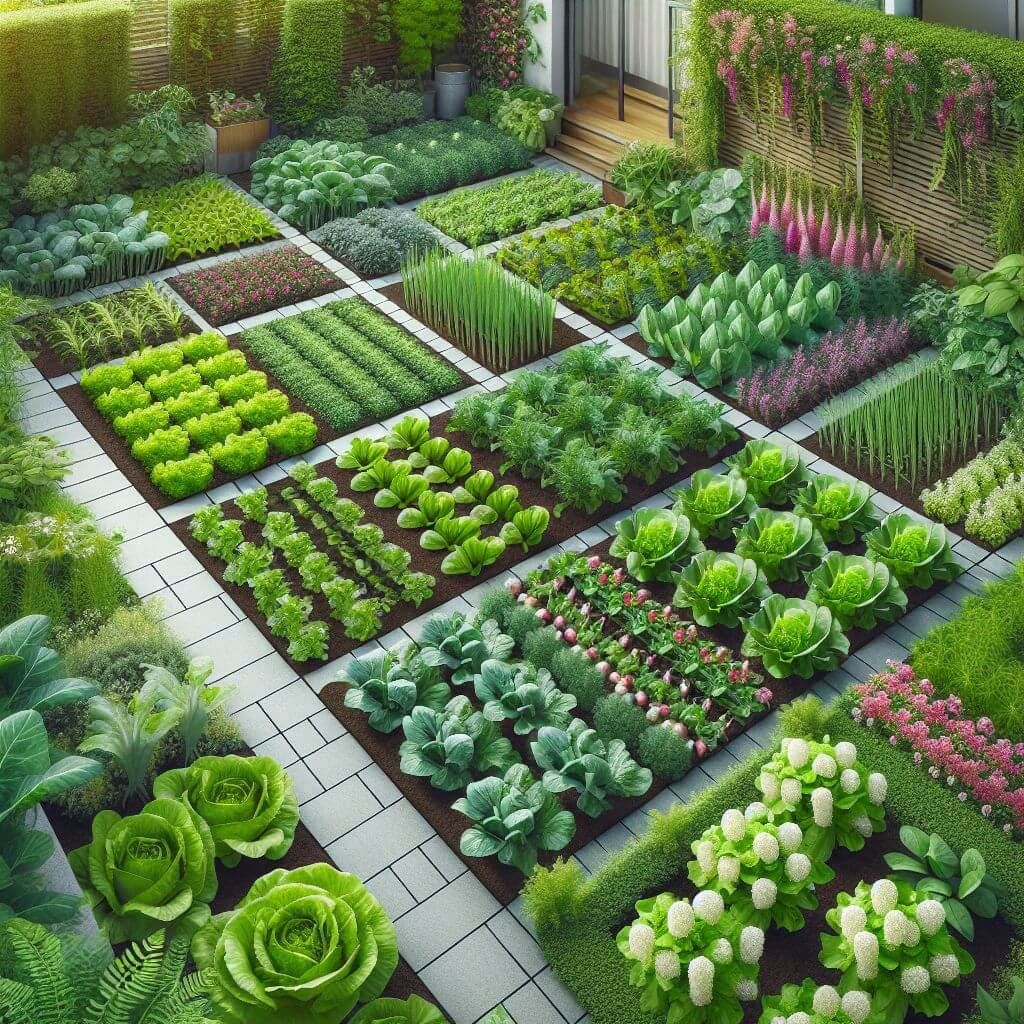
Key Takeaways
Quick-grow vegetables can be harvested in as little as 25 days.
Choosing the right vegetables and starting with seedlings can accelerate your garden’s yield.
Proper location, soil preparation, and care are crucial for a successful instant garden.
Harvesting at the right time ensures the freshest taste and maximum nutrients.
Storing your harvest properly can provide a reliable source of food in emergencies.
Grow Quick and Harvest Sooner: Fast Veggies for Your Instant Garden
Imagine your garden teeming with fresh veggies in just a few short weeks. It’s not only possible; it’s surprisingly simple with the right know-how. If you’re eager to boost your self-sufficiency with a garden that grows at lightning speed, you’re in the right place. Let’s dive into the world of quick-grow vegetables, perfect for emergency food production or simply satisfying your desire for homegrown goodness in a flash.
Discover the Fastest Veggies to Grow
Some veggies are sprinters; they shoot up quickly, giving you a harvest in no time. Think of leafy greens like lettuce, spinach, and arugula. These can be ready to eat in just a few weeks. Then there are the root veggies like radishes and turnips, which are also quick to mature. Legumes like peas and beans are not only fast-growing but also enrich the soil with nitrogen, making them excellent for your garden’s health.
Learn Quick-Start Gardening Techniques
Starting your garden off on the right foot is crucial. From choosing the best location that gets plenty of sunlight to preparing the soil with the right nutrients, every step is important. And remember, watering is key! Too little and your plants will be thirsty, too much and you might drown them. I’ll guide you through each step to ensure your garden thrives.
Why Quick-Grow Veggies Are Essential for Emergency Food Production
In times of uncertainty, having a reliable source of food is invaluable. Quick-grow vegetables can be a lifeline, providing fresh produce in short order. Whether you’re dealing with a short growing season or preparing for the unexpected, these fast producers are a smart addition to your garden plan.
Choosing the Right Veggies for Your Instant Garden

Not all veggies are created equal when it comes to growth rates. Some are just naturally faster than others. Choosing the right types for your instant garden is the first step towards a quick harvest.
The Speedy Greens: Lettuce, Spinach, and Arugula
Lettuce is a champion of quick growth, with some varieties ready to harvest in as little as 30 days. Spinach follows closely behind, and arugula can add a peppery kick to your salads in no time. These leafy greens not only grow fast but are also packed with nutrients.
Root for the Quick: Radishes and Turnips
Root vegetables like radishes and turnips are perfect for your instant garden. Radishes can be ready to harvest in just 22 days, while turnips take a bit longer but are still a speedy option compared to other root veggies. Both are versatile in the kitchen and can be grown in succession for a continuous supply.
Fast-Tracking with Legumes: Peas and Beans
Legumes are not only quick to harvest but also improve your garden’s soil. Peas can be picked as early as 60 days after planting, and beans aren’t far behind. They’re a win-win for your garden: quick food on your plate and better soil for the next crop.
Building Your Instant Garden: Step by Step
Ready to get your hands dirty? Building an instant garden is a rewarding experience, and I’m here to walk you through each step.
Identifying the Ideal Location for Your Garden
The right location is everything. Your garden needs to soak up at least six hours of sunlight daily. Find a spot that’s well-drained and clear of any large roots or rocks. And if you’re short on space, don’t worry! Many quick-grow veggies thrive in containers on patios or balconies.
Assembling Your Gardening Toolkit
Before you start, make sure you have the right tools for the job. A trowel, gardening gloves, a watering can, and some quality seed starting mix are essentials. You’ll also want to have your seeds or seedlings ready to go. Opt for high-quality, non-GMO options to ensure the best start for your garden.
With these key takeaways and steps in mind, you’re well on your way to enjoying fresh, homegrown vegetables in no time. Stay tuned for the next installment, where we’ll delve into the nitty-gritty of soil preparation, seed germination, and garden care to maximize the growth of your quick veggies.
Identifying the Ideal Location for Your Garden
Let’s talk about where to set up shop. You’ll want to find a spot that gets plenty of sunlight – at least six hours a day. This is crucial for most veggies, especially the fast-growing kinds. Sunlight is like a pep talk for plants; it gets them going and growing. Besides that, ensure the area has good drainage. Waterlogged soil can spell disaster for your veggies, so a spot that doesn’t leave puddles after rain is ideal.
Now, if you’re in an urban jungle with more concrete than soil, don’t fret. Many quick-grow vegetables can be raised in containers. A balcony, patio, or even a sunny windowsill can be your mini farm. Just make sure your pots have drainage holes, and you’re good to go.
Most importantly, think about accessibility. Your garden should be easy to get to for regular watering and harvesting. If it’s out of sight, it might end up out of mind, and we don’t want that. So pick a spot that you’ll see often, reminding you to give your green buddies the TLC they need.
Assembling Your Gardening Toolkit
Every gardener needs their trusty tools. Start with a trowel for planting, a good pair of gloves to keep your hands clean, and a watering can or hose with a gentle spray setting. You’ll also need some high-quality seed starting mix to give your seeds the best start in life. And of course, you can’t forget the seeds or seedlings themselves. Choose varieties known for their speed and your local climate suitability to set yourself up for success.
Soil Preparation Made Simple
Soil is more than just dirt; it’s a living, breathing thing that feeds your plants. To get your quick-grow veggies off to a flying start, mix in some organic compost with your soil. This will add nutrients and improve soil structure, allowing roots to spread out and take hold. If you’re using containers, a high-quality potting mix will do the trick.
Another tip is to keep the soil loose. Don’t compact it too much when you plant your seeds or seedlings. They need room to breathe and grow. A light touch is best. And remember, the soil should be moist, like a wrung-out sponge, not soggy or dry. Finding that balance is key to happy, healthy plants.
Making Every Day Count: Accelerating Growth

To speed up your garden’s growth, think about how you can give your plants an advantage from the start. That means choosing the right seeds, preparing your soil, and providing consistent care. It’s like training for a race; the better the preparation, the better the performance.
Because let’s face it, time is of the essence when you’re aiming for quick harvests. So, every little bit you do to help your plants along can shave days off the waiting time. And in the world of instant gardening, every day counts.
Germinating Seeds Faster
Germination is the first hurdle in your plant’s life. To speed things up, soak your seeds in water overnight before planting. This softens the seed coat and tells the seed, “Hey, it’s go time!” Use warm water, not hot, to avoid cooking your seeds – they’re not ready for that kind of heat just yet.
Caring for Your Quick-Grow Veggies
Once your seeds are in the ground, they’ll need consistent moisture to sprout. That means watering gently but regularly. If you let the soil dry out, you could be saying goodbye to those sprouts. But too much water isn’t good either. It’s all about finding that Goldilocks zone – just right.
As your plants grow, they’ll need food. A balanced, water-soluble fertilizer can give them a boost. Just follow the directions on the label. You want to feed your plants, not overwhelm them. And as they get bigger, be sure to thin them out so they have room to reach their full potential.
Managing Pests and Diseases Swiftly
Keep an eye out for uninvited guests. Aphids, slugs, and other pests love tender young plants. If you spot them, act fast. Remove pests by hand or use organic pest control methods to keep them at bay. And if you see any signs of disease, like discolored leaves or stunted growth, remove the affected parts immediately to prevent it from spreading.
Harvesting Your Bounty: When and How
Now for the best part – harvesting! Your quick-grow veggies will be ready before you know it. But how do you know when it’s time? I’ll tell you.
Signs Your Veggies Are Ready to Harvest
Lettuce and leafy greens are ready when they’re big enough to eat. Just pick the outer leaves, and they’ll keep growing. For radishes and other root veggies, check if the top of the root is poking out of the soil. If it looks like a good size, gently pull it out. And for peas and beans, they should feel plump inside the pod. If they rattle around, they’re not ready yet.
Most importantly, harvest in the morning if you can. This is when your veggies are the freshest and crispest. They’ve been drinking up water all night and are full of flavor. Trust me, you’ll taste the difference.
Best Practices for Harvesting Quick-Grow Veggies
Use clean, sharp scissors or a knife to cut greens, so you don’t damage the plant. And when pulling up root veggies, loosen the soil around them first to avoid breaking them. Be gentle; these are your babies, after all.
Preserving Your Harvest: Storing for Emergencies
Last but not least, let’s talk storage. If you’ve grown more than you can eat right away, you’ve got options. Most leafy greens will keep in the fridge for a week or so. Root veggies can last even longer if you store them in a cool, dark place. And legumes? They can be dried or canned for long-term storage. This way, you’ll have homegrown veggies ready whenever you need them.
Best Practices for Harvesting Quick-Grow Veggies
Harvesting your vegetables at the right time is crucial to get the best flavor and nutrition. For leafy greens, harvest early in the morning when their sugar content is highest. For root vegetables, wait until they are fully formed but before they become too large and tough. Peas and beans should be picked when the pods are plump but before they start to yellow. Always use clean, sharp tools to avoid damaging the plants and to make a clean cut that heals quickly, preventing disease.
Preserving Your Harvest: Storing for Emergencies
Once you’ve harvested your quick-grow vegetables, it’s important to store them properly to extend their shelf life, especially if you’re considering emergency food production. Different vegetables require different storage methods, but most can be stored in a cool, dry place or preserved through canning, freezing, or drying. Proper storage not only keeps your vegetables fresh for longer but also ensures that you have a supply of nutritious food available in case of an emergency.
Simple Storage Solutions
For leafy greens, wrap them in a damp paper towel and place them in a plastic bag in the refrigerator. This can keep them fresh for a week or more. Root vegetables like radishes and turnips can be stored in a cool, dark place, like a cellar, for several months. For legumes like peas and beans, blanching and freezing is an excellent way to preserve their freshness. Remember to label and date everything you store to keep track of your inventory.
Extending the Life of Your Veggies
Extending the life of your vegetables goes beyond proper storage. You can pickle, ferment, or even create vegetable powders from your harvest. These methods not only preserve your veggies but also provide you with a variety of ways to enjoy them. For example, pickled radishes can add a zesty crunch to your meals, while dried and powdered spinach can be a nutritious addition to smoothies or soups.
FAQ
Got questions? I’ve got answers. Here are some of the most common questions about quick-grow vegetables and how to make the most of your instant garden.
What are the top 5 fastest-growing vegetables?
The top 5 fastest-growing vegetables are radishes, lettuce, spinach, arugula, and peas. These vegetables can go from seed to harvest in as little as 25 to 30 days, making them ideal for quick production and emergency food supplies.
Radishes, especially, are incredibly quick, with some varieties ready to eat in just 22 days. Lettuce can be harvested leaf by leaf, providing a continuous supply. Spinach is not only fast but also packed with iron and other nutrients. Arugula adds a peppery flavor to meals and can be picked as soon as the leaves are large enough. Peas are sweet and delicious straight from the pod and can be harvested within 60 days.
How often should I water my quick-grow vegetable garden?
Watering frequency for your quick-grow vegetable garden depends on a few factors, such as the weather and the type of soil you have. A general rule of thumb is to water when the top inch of soil feels dry to the touch. This could mean watering once a day or every few days. Be consistent and avoid overwatering, which can lead to root rot and other issues.
Remember, the goal is to maintain evenly moist soil. If you’re unsure, it’s better to water little and often rather than all at once. This helps to encourage deep root growth, which is essential for healthy, resilient plants.
Using a mulch can help retain moisture and reduce the need for frequent watering. Organic mulches like straw or wood chips also add nutrients to the soil as they decompose, providing additional benefits to your growing veggies.
Can I grow quick-grow vegetables in containers?
Yes, many quick-grow vegetables are well-suited to container gardening.
Choose containers with adequate drainage holes to prevent waterlogging.
Use a high-quality potting mix specifically designed for container gardening.
Ensure your containers are placed in a location that receives plenty of sunlight.
Keep an eye on the moisture level in containers, as they can dry out faster than garden beds.
Container gardening is a fantastic option for those with limited space. It allows for flexibility in managing sunlight exposure and can be easier to protect from pests. Plus, containers can be moved indoors if unexpected cold weather threatens your quick-grow vegetables.
What are some common pests to watch for in an instant garden?
In an instant garden, some common pests to watch for include aphids, slugs, and caterpillars. These pests can quickly damage your vegetables, so it’s important to monitor your plants regularly and take action if you spot any. You can remove pests by hand, use barriers like copper tape for slugs, or apply organic pesticides if necessary. Always try to use the least harmful methods first to protect beneficial insects and the environment.
How can I use quick-grow vegetables for long-term emergency food storage?
For long-term emergency food storage, focus on preserving methods that prevent spoilage and retain nutritional value. You can can or pickle your vegetables, dehydrate them for storage in airtight containers, or freeze them if you have enough freezer space. These methods can significantly extend the shelf life of your harvest and provide you with a variety of foods to use throughout the year. Always follow safe food preservation practices to ensure the quality and safety of your stored produce.
In times of uncertainty, establishing a sustainable food source is crucial. One of the best ways to achieve this is through an emergency garden that can produce food quickly. Fast-growing vegetables like spinach, radishes, and lettuce can be harvested in a matter of weeks and are perfect for succession planting, ensuring a continuous supply of fresh produce. In addition to providing sustenance, gardening can be a therapeutic activity, helping to reduce stress in challenging times.







Leave a Reply